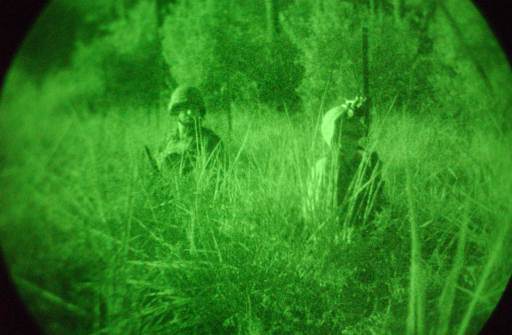How Do Night Vision Goggles Work?

Night vision goggles are used to allow people to see in low light conditions. They are commonly used by the military, law enforcement, and search and rescue teams. Night vision goggles amplify the available light, whether it’s moonlight, starlight, or infrared light, to help the wearer see in the dark.
How night vision goggles work
Night vision goggles work by amplifying the available light. The human eye is not very sensitive to light, so even a small amount of light can be amplified enough to allow someone to see in the dark.
The amplifier in night vision goggles takes the tiny amount of light that is present and makes it brighter. This amplified light is then sent to a phosphor screen, which glows and allows the user to see.
Different types of night vision goggles
There are two main types of night vision goggles: image intensifier tubes and thermal imaging.
Image intensifier tubes take the available light and amplify it, as described above. Thermal imaging devices work by detecting the infrared radiation emitted by objects. These devices do not require any light at all to work, which makes them ideal for use in complete darkness.
Advantages and disadvantages of night vision goggles
Night vision goggles have a number of advantages over other methods of low light vision, such as flashlights or lanterns. Night vision goggles allow the user to see in complete darkness, without giving away their position with a light source.
Thermal imaging devices also have the advantage of being able to see through smoke, dust, and other obscurants that would block visible light.
However, night vision goggles also have some disadvantages. They can be expensive, and they require batteries to operate. Additionally, image intensifier tubes can be damaged by bright light, so they must be used with caution in areas where there is a risk of sudden changes in lighting conditions.
History of night vision goggles
The first night vision devices were developed in the early 1900s, but they were not very practical for use in combat. It wasn’t until World War II that significant progress was made in the development of night vision devices.
During the war, both the Germans and the Allies used a variety of night vision devices, including image intensifier tubes and infrared projectors. After the war, night vision technology was further developed for use in a variety of civilian and military applications.
Uses in the military and law enforcement
Night vision goggles are commonly used by the military and law enforcement. They allow soldiers and police officers to see in low light conditions without giving away their position.
Night vision goggles are also used by search and rescue teams to help them find people who are lost or injured in darkness.
Future of night vision goggles
As night vision technology continues to evolve, it is likely that night vision goggles will become smaller, lighter, and more affordable. Additionally, new applications for night vision devices are constantly being developed. For example, researchers are working on developing contact lenses with built-in night vision capabilities.